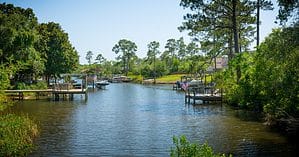New Jersey is located in the Mid-Atlantic region of the United States. It is the fourth-smallest state in the nation in terms of total area. Here’s a look at the size of the Garden State and how it compares to the total areas of other U.S. states.
Length and Width of New Jersey
New Jersey measures 150 miles from north to south. That is roughly equivalent to the distance from Washington, D.C., to Allentown, Pennsylvania.
The state’s width is less than half its length, measuring just 70 miles from east to west. That’s about the same distance as Washington, D.C., to York, Pennsylvania.
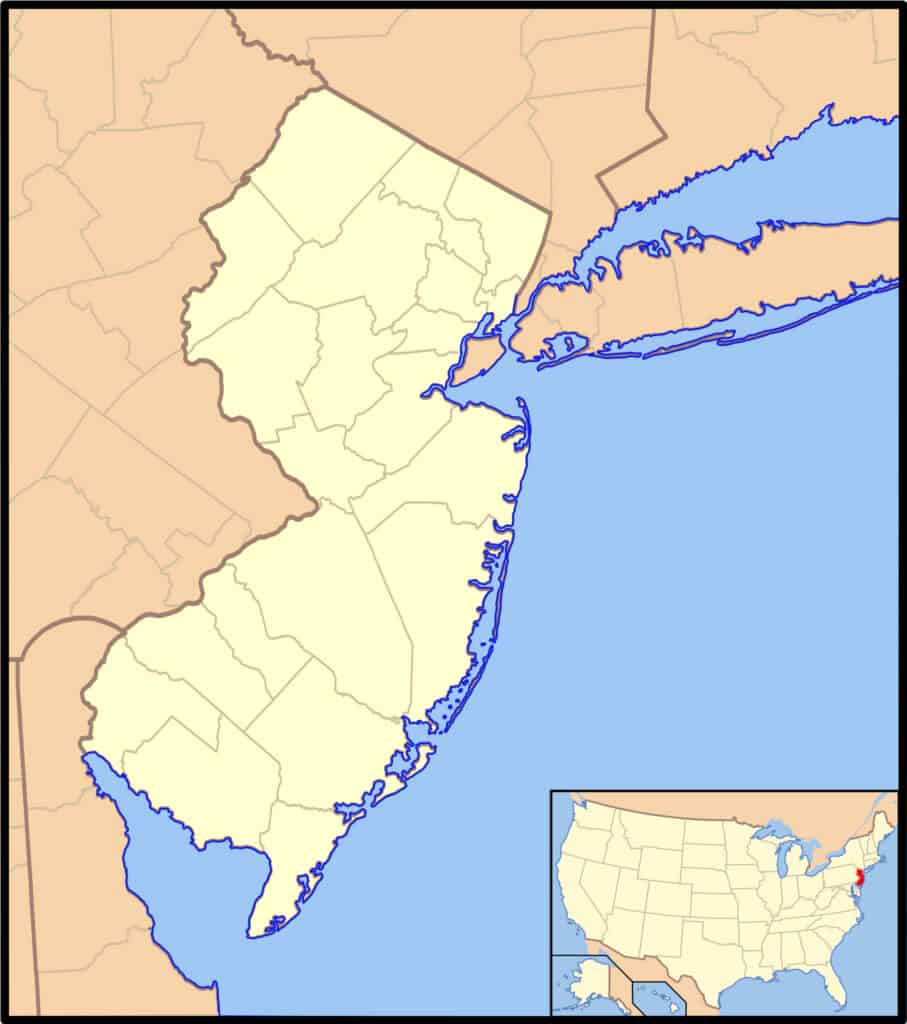
New Jersey is located along the coast in the northeast United States and is the fourth-smallest state in the nation.
©National Atlas of the United States / Public domain – License
Square Miles and Kilometers
New Jersey’s total area covers 8,722 square miles, which equates to nearly 22,590 square kilometers. Over fifteen percent of the state’s total area is water. New Jersey has 7,354 square miles of land and 1,368 square miles of water.
Acres
The Garden State covers 5,582,080 acres. Lake Erie could completely cover the state with room to spare. The second-smallest of the Great Lakes covers nearly 6.4 million acres.
Other States
As noted earlier, New Jersey is the fourth-smallest state in the U.S. However, it is larger than the smallest three states combined: Connecticut (5,018 square miles), Delaware (1,982 square miles), and Rhode Island (1,214 square miles).
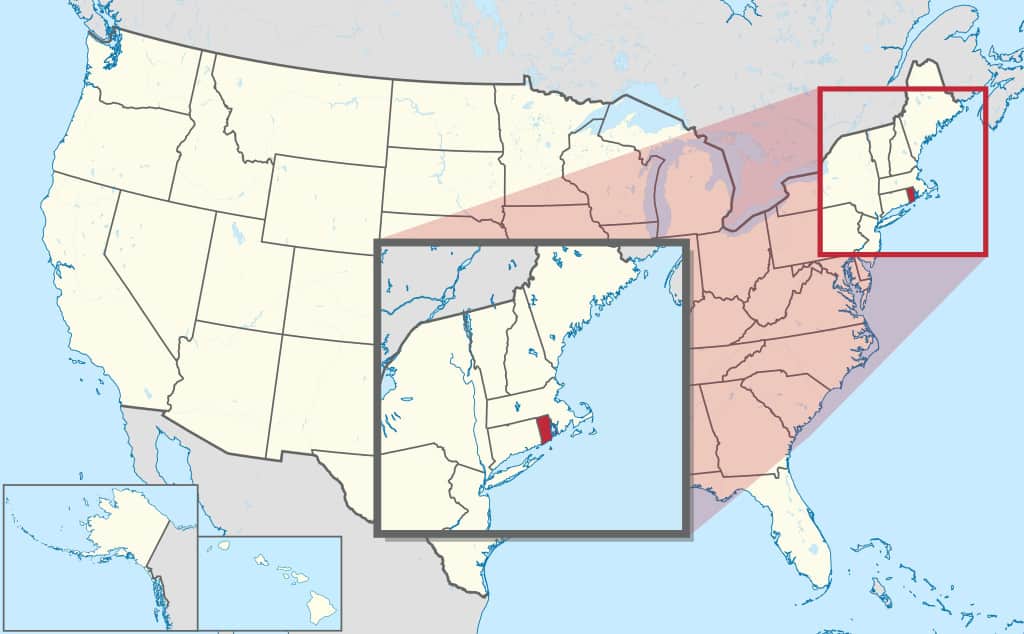
New Jersey is more than seven times the size of Rhode Island.
©TUBS / CC BY-SA 3.0 – License
The next largest states after New Jersey are New Hampshire (9,349 square miles) and Vermont (9,616 square miles). The remainder of U.S. states all have areas greater than 10,000 square miles.
Alaska is the largest state in the U.S. by far. You could fit over seventy-five New Jerseys inside Alaska’s borders!
The next largest states also dwarf New Jersey. Texas is nearly thirty-one times larger than New Jersey. It would take nineteen New Jerseys to cover the total area of California.
New Jersey occupies about 0.25% of the total land area of the United States. Only 0.04% of the nation’s land is contained in Rhode Island, while Alaska accounts for a whopping 17.48% of all land in the United States.
State Borders
New Jersey shares borders with three states: New York to the north, Pennsylvania to the west, and Delaware to the south.
The state’s eastern border lies on the Atlantic coast. New Jersey features 126 miles of coastline from Sandy Hook to Cape May.
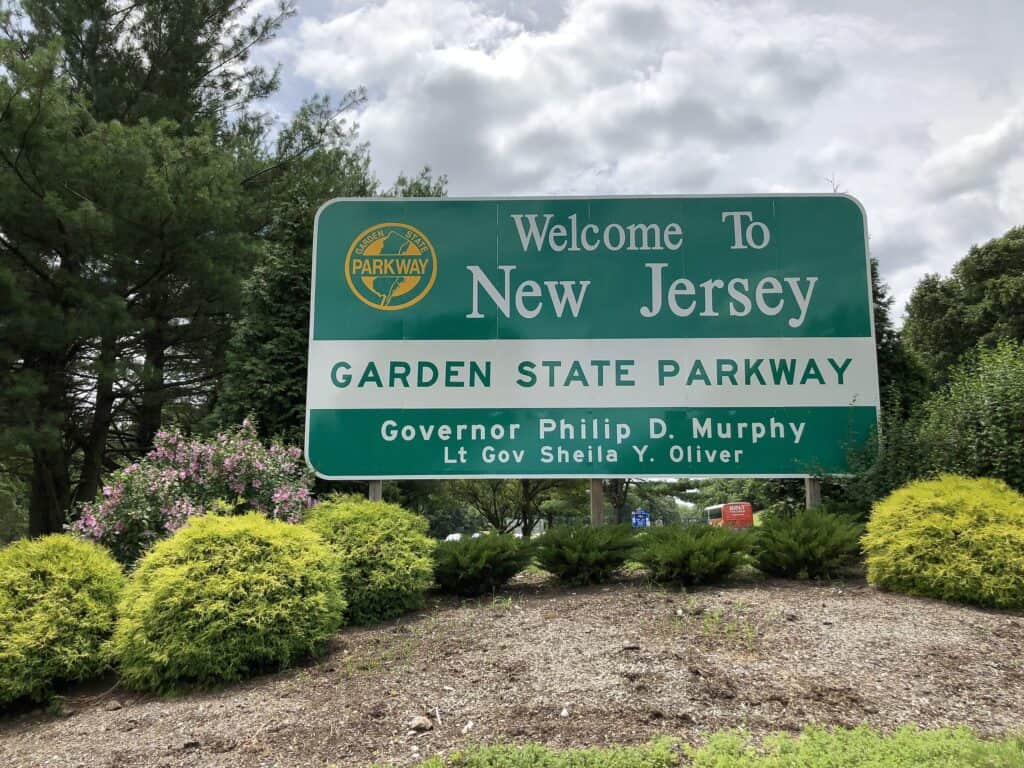
Drivers can enter the Garden State from New York, Pennsylvania, and Delaware.
©Famartin / CC BY-SA 4.0 – License
Population
While New Jersey is among the smallest states in terms of area, it is the eleventh most populous state in the nation. The U.S. Census Bureau estimates the state’s 2022 population was 9,261,699. The top ten most populous states all have populations north of ten million, starting with Michigan at 10,034,113 (2022 estimate).
With its small size and large population, New Jersey is the most densely populated state in the nation. Population density is measured by the number of people per square mile. New Jersey has a population density of 1,263 people per square mile. Rhode Island is the second most densely populated state, with 1,061 people per square mile.
Washington, D.C., is the only place in the United States, including all its states and territories, with a greater population density than New Jersey. The District of Columbia has a population density of 11,295 people per square mile.
Alaska is the largest state in terms of area but is also the least densely populated, with only 1.3 people per square mile.
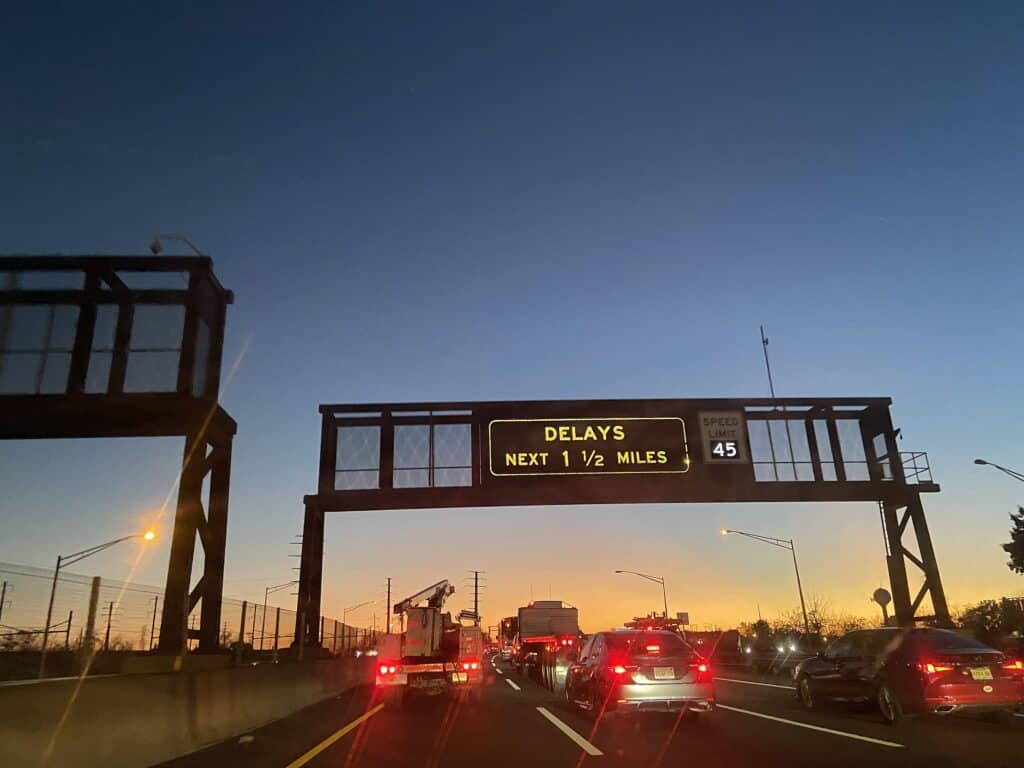
With so many people in such a small state, traffic is a way of life in the Garden State, as seen here on the New Jersey Turnpike.
©ActivBowser9177 / CC BY-SA 4.0 – License
Largest Cities
Newark is the largest city in New Jersey, with 305,344 residents (2022 estimate) and a metro population of 2.6 million. Jersey City is the next largest municipality in the state, with a population of 283,943.
New Jersey has two more cities with populations over 100,000: Paterson (157,794) and Elizabeth (135,407). There are also three townships in the state with more than 100,000 people: Lakewood Township (135,158), Edison (107,588), and Woodbridge Township (103,639). That is quite a high number of large municipalities for such a small state, which reinforces just how densely populated New Jersey really is.
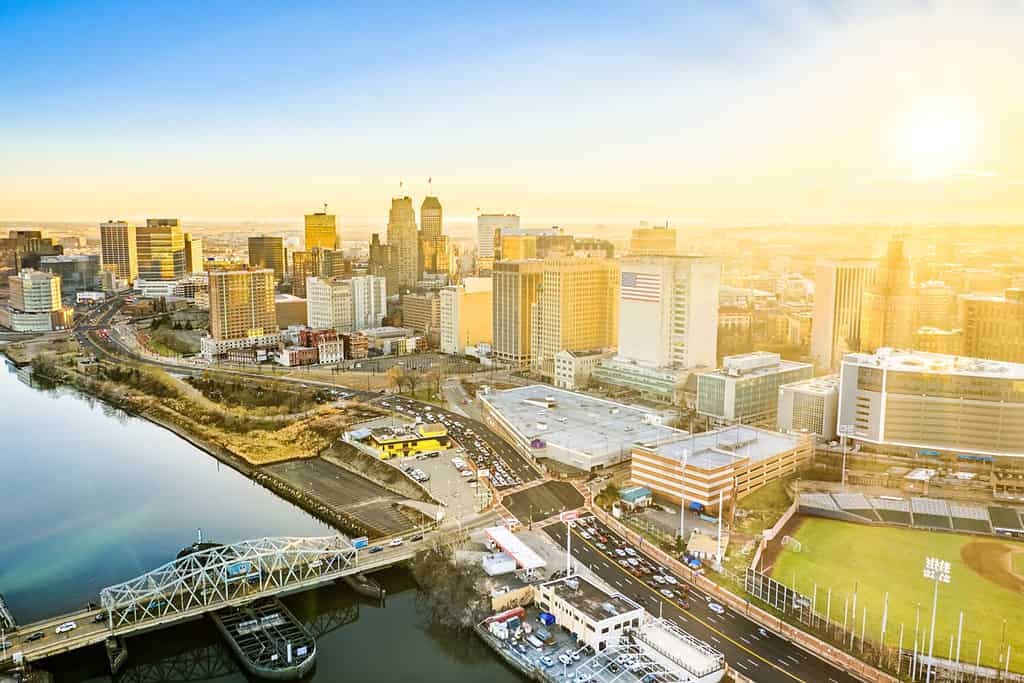
Newark is the largest city in the state.
©Mihai_Andritoiu/Shutterstock.com
Capital
Trenton was named the state capital in 1790, making it one of the oldest capital cities in the U.S. The New Jersey capital is also the geographic center of the state. The city is home to 89,661 people.
Counties
New Jersey has twenty-one counties, far below the average of sixty-two for a U.S. state. To be precise, the state has the eleventh-fewest counties in the nation (Alaska and Louisiana do not use county divisions).
New Jersey’s counties are:
- Atlantic County
- Bergen County
- Burlington County
- Camden County
- Cape May County
- Cumberland County
- Essex County
- Gloucester County
- Hudson County
- Hunterdon County
- Mercer County
- Middlesex County
- Monmouth County
- Morris County
- Ocean County
- Passaic County
- Salem County
- Somerset County
- Sussex County
- Union County
- Warren County
Bergen County is the most populous county in New Jersey, with 952,997 residents. The least populous is Salem County, with 65,117 people.
The largest county in the state is Burlington County, at 805 square miles. The smallest is Hudson County, at just 47 square miles.
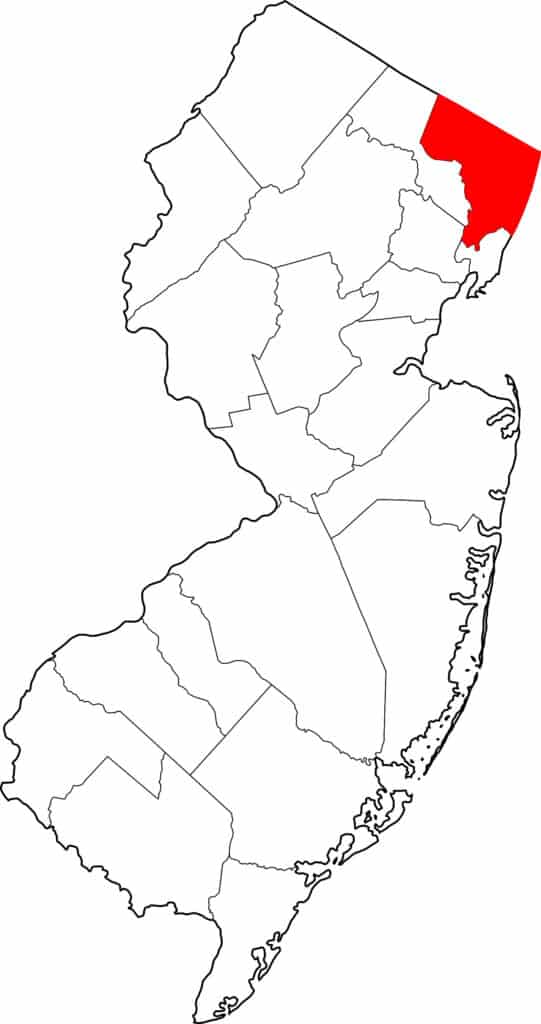
With its close proximity to both Newark and New York City, Bergen County is the most populous county in New Jersey.
©David Benbennick / Public domain – License
Land Regions
Despite its small size, New Jersey divides into four distinct land regions. The Atlantic Coastal Plain covers three-fifths of the state and is generally around 100 feet above sea level. It features rolling hills, salt marshes, and sandy beaches along the coast. Popular resort areas such as Atlantic City, Ocean City, and Cape May are found here.
The Piedmont is northeast of the Atlantic Coastal Plain. It is only twenty miles wide, but it contains New Jersey’s major rivers: the Hudson River, Passaic River, Ramapo River, and Raritan River. The largest cities in the state are also found here.
The New England Upland (also known as The Highlands) is west of the Piedmont and features flat-topped rock ridges.
The Appalachian Ridge and Valley Region in the northernmost part of the state is a mountainous area that contains the Kittatinny Mountains.
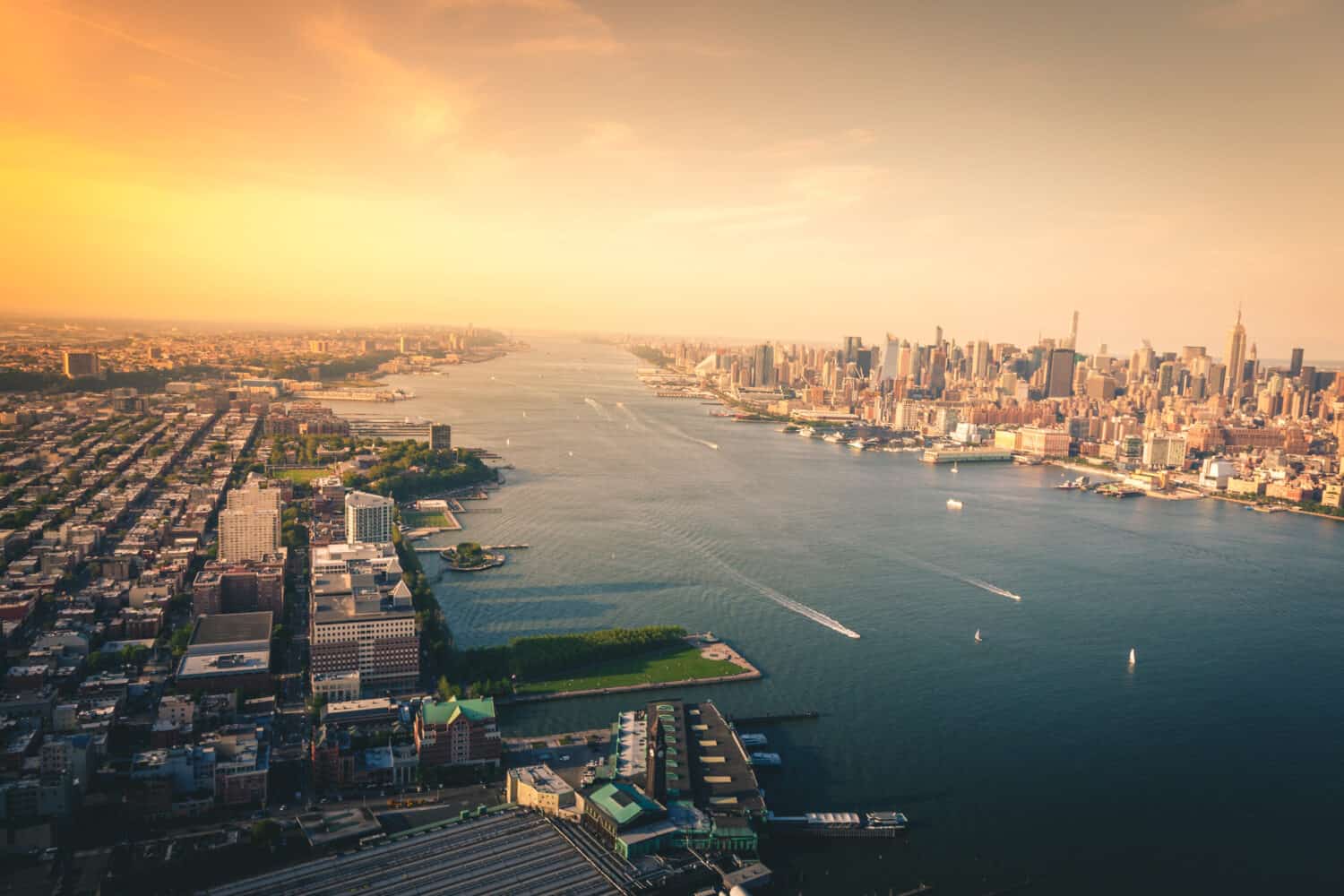
The Hudson River flows mostly through New York State, but 21 miles of this waterway form the border between New York and New Jersey.
©Erik Nuenighoff/Shutterstock.com
Parks and More
New Jersey boasts thirty-eight state parks and recreation/natural areas. There are also eleven state forests, forty-eight historic sites, and over 150 memorial sites in the state.
Wharton State Forest is the largest tract of land in New Jersey’s state park system. The forest covers over 110,000 acres.
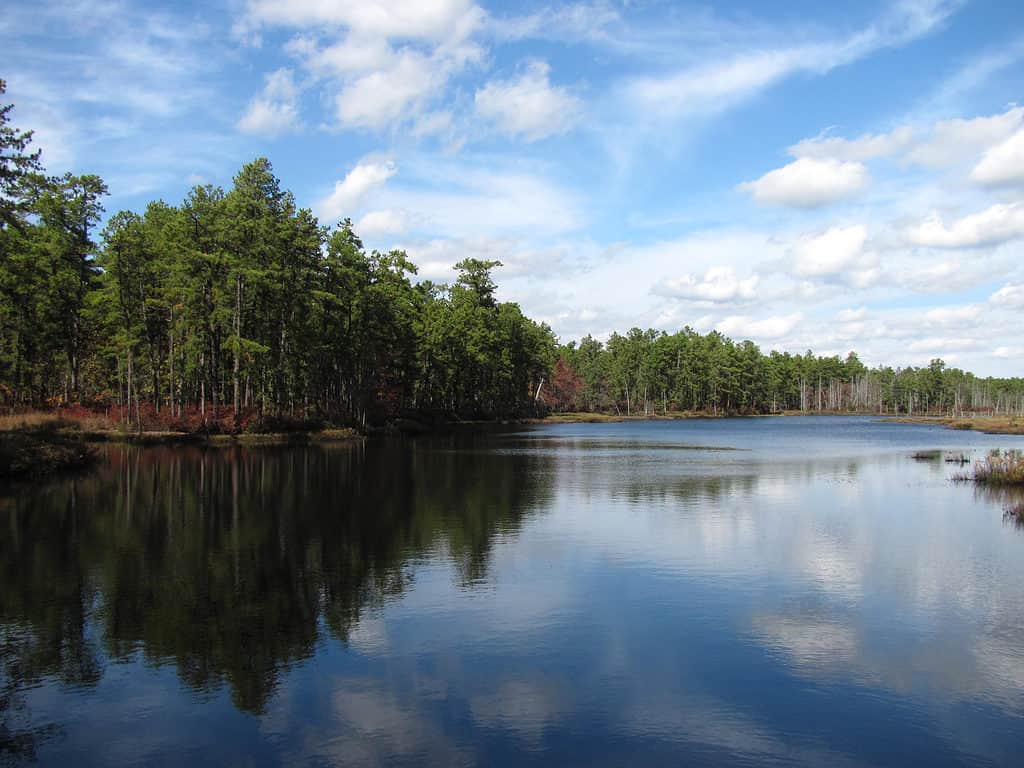
Wharton State Forest stretches for nearly 172 square miles.
©New Jersey Pinelands Commission, CC BY-SA 4.0 <https://creativecommons.org/licenses/by-sa/4.0>, via Wikimedia Commons – License
Origin of New Jersey
New Jersey was one of the thirteen original colonies and was the third state admitted to the Union on December 18, 1787. The state’s admission came just six days after Pennsylvania’s and eleven days after Delaware’s.
Since it began as a British colony, New Jersey was named after the island of Jersey in the English Channel.
State Animals
New Jersey has ten designated state animals. The horse was named the official state animal of New Jersey in 1977.

With 21 horse race tracks in the state, it’s no wonder why the horse is the official animal of New Jersey.
©gabriel12/Shutterstock.com
Other officially recognized animals include:
- Eastern goldfinch (state bird)
- Honey bee (state insect)
- Black swallowtail butterfly (state butterfly)
- Seeing Eye Dog ® (state dog)
- Hadrosaurus foulkii (state dinosaur)
- Brook trout (state freshwater fish)
- Striped bass (state saltwater fish)
- Bog turtle (state reptile)
- Knobbed whelk (state shell)
The photo featured at the top of this post is © Darwinek / CC BY-SA 3.0 – License / Original
Thank you for reading! Have some feedback for us? Contact the AZ Animals editorial team.






